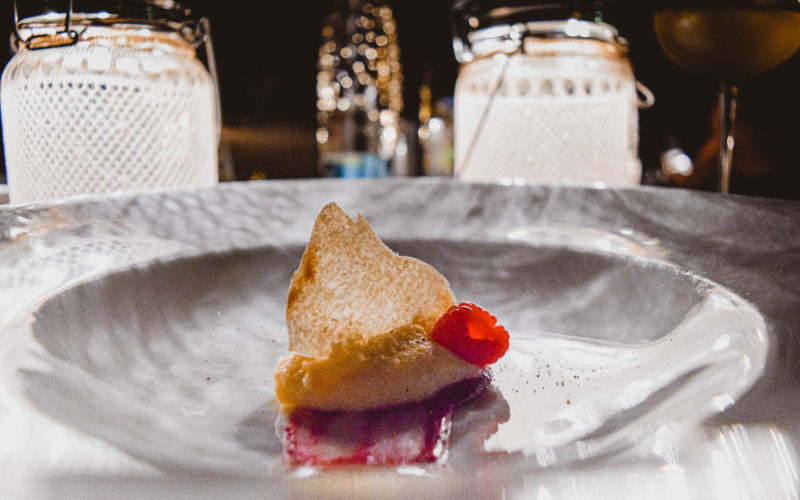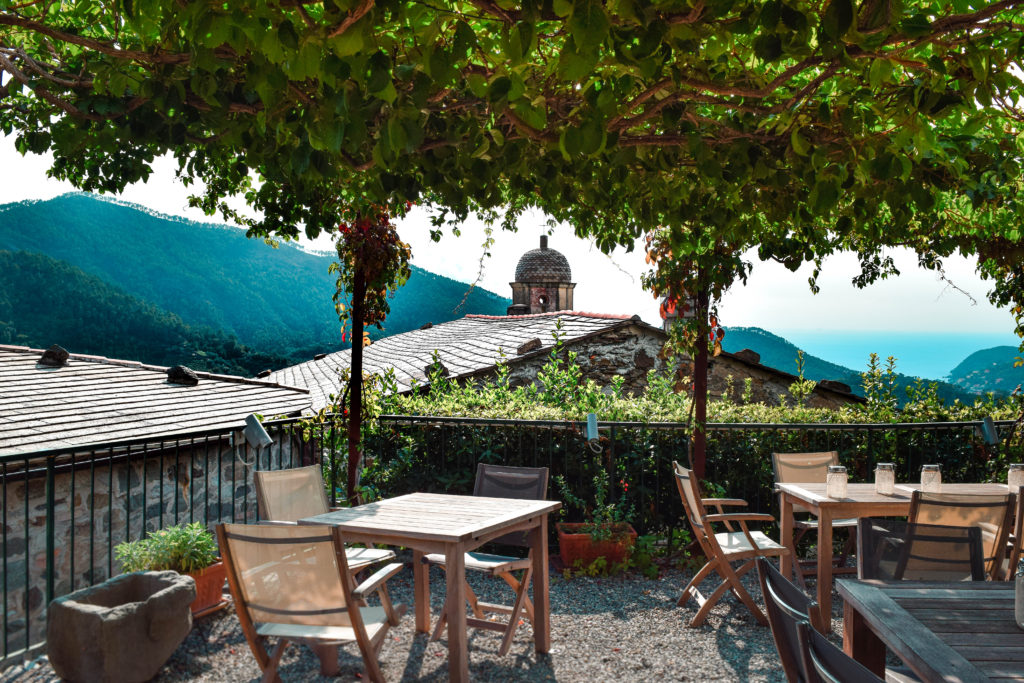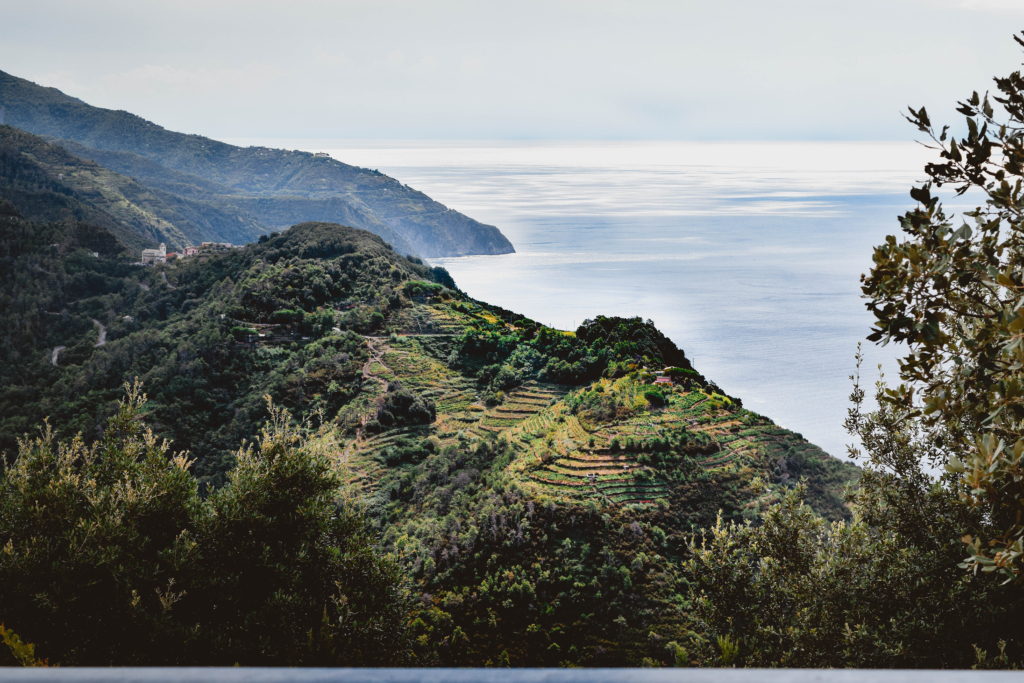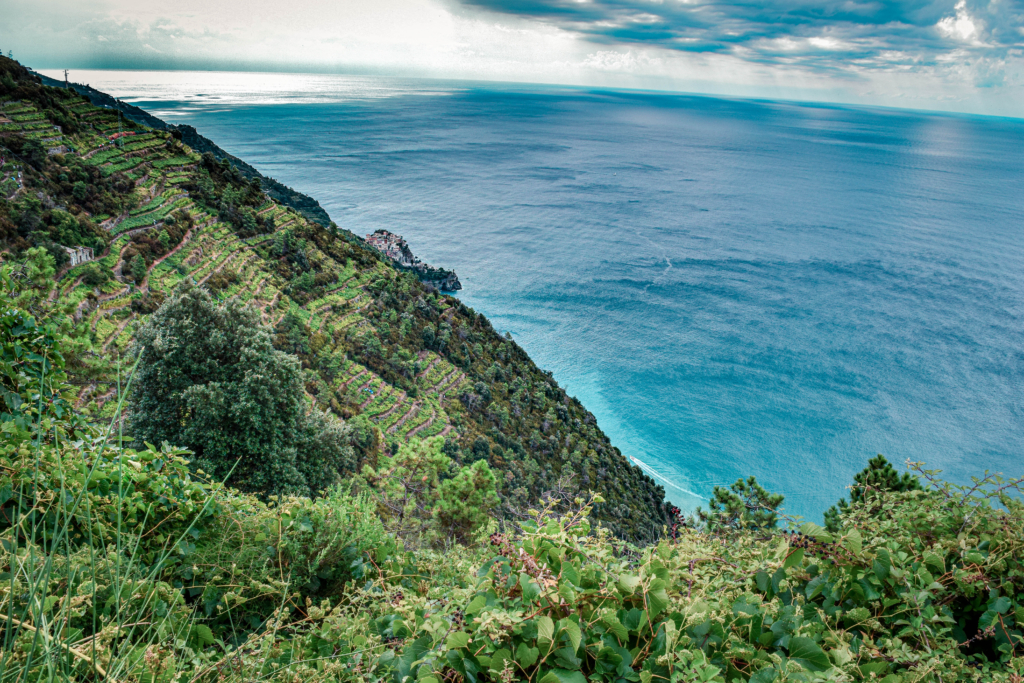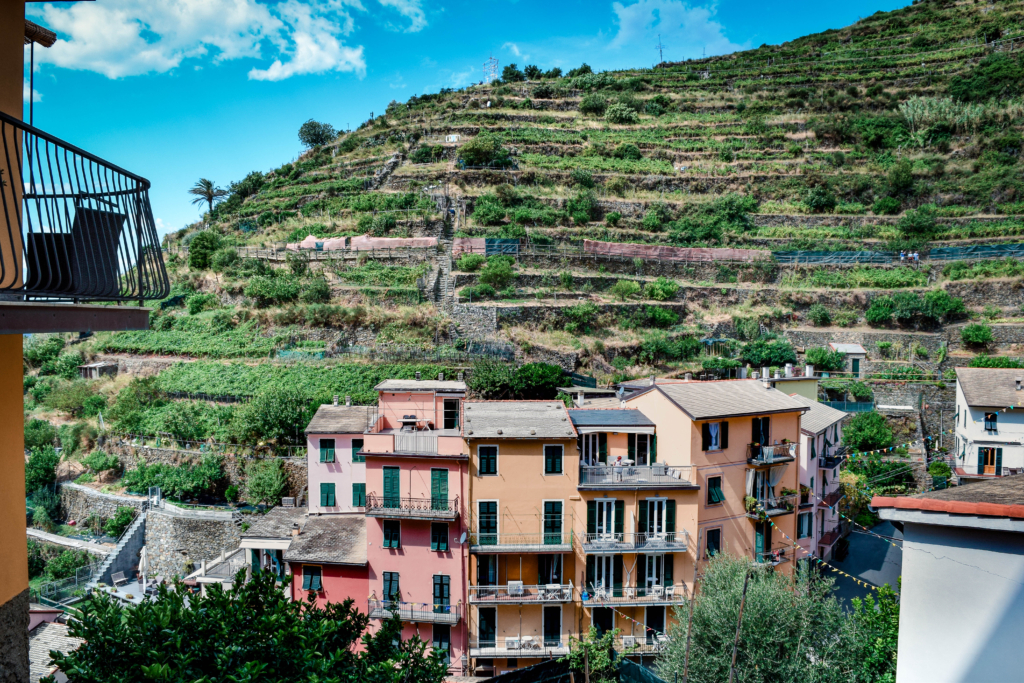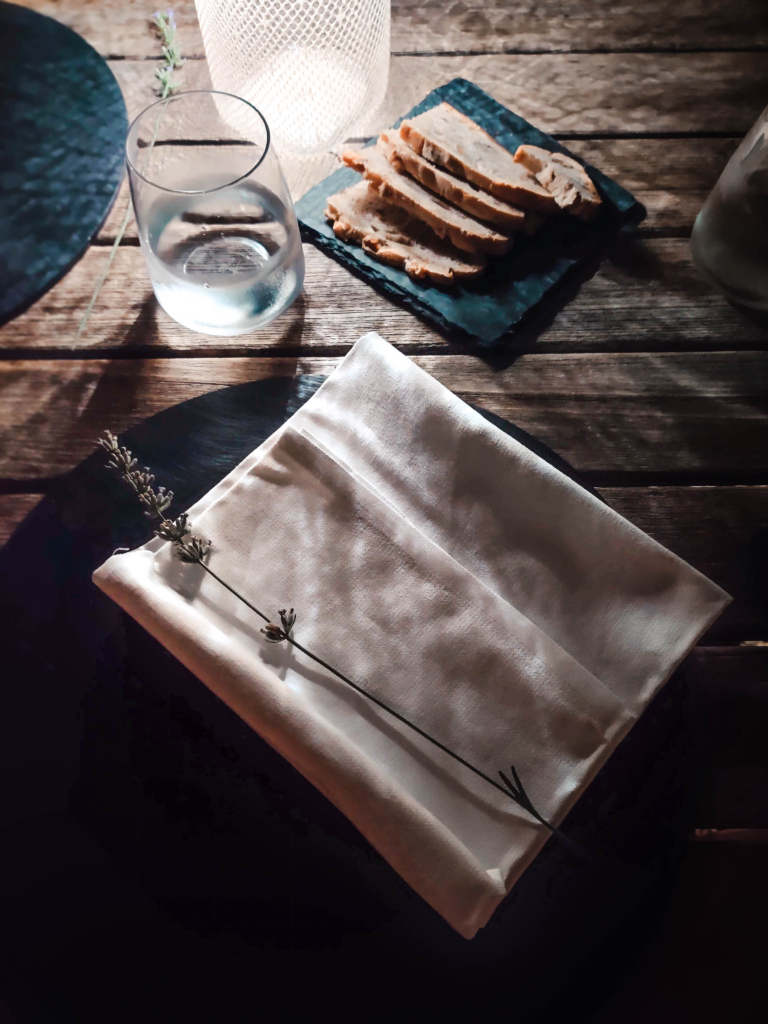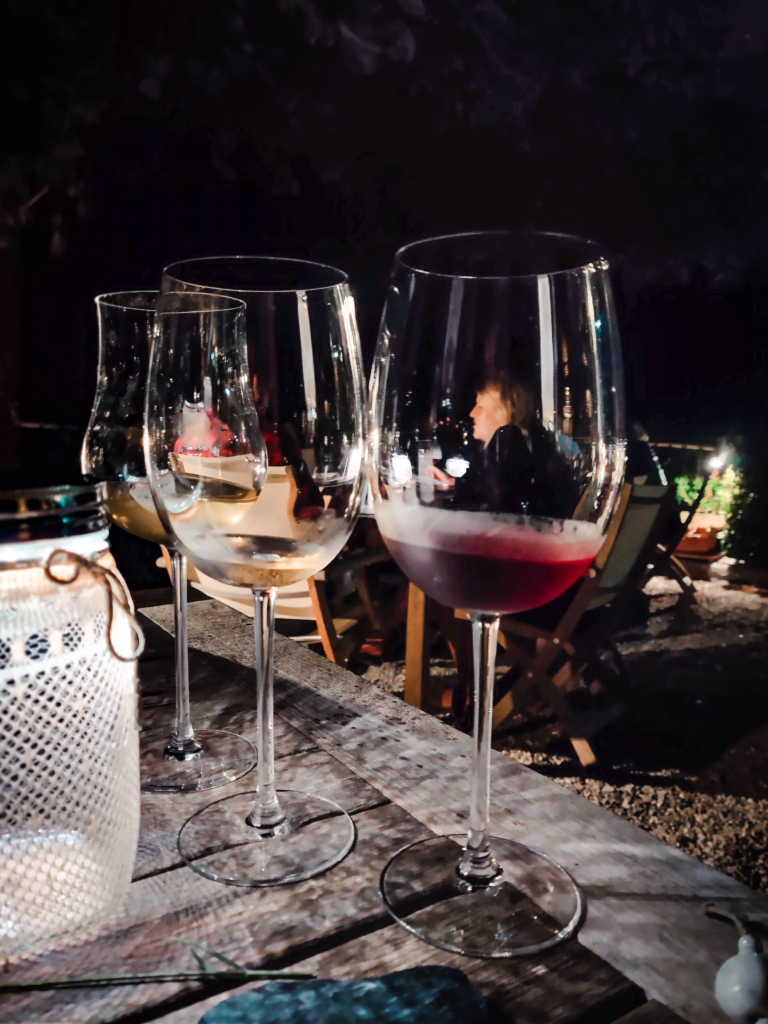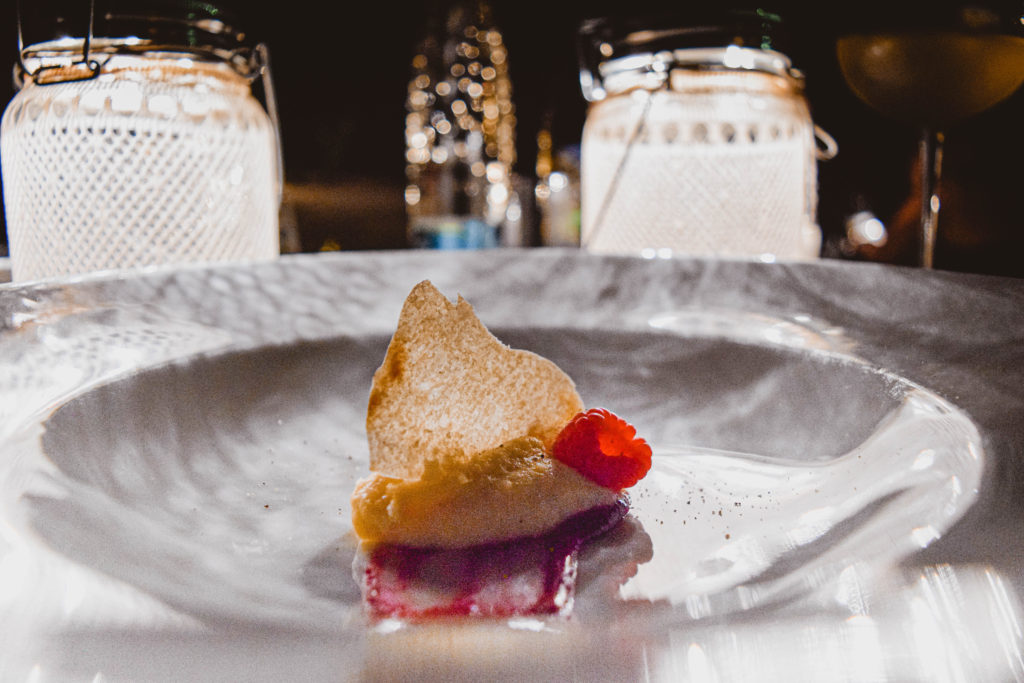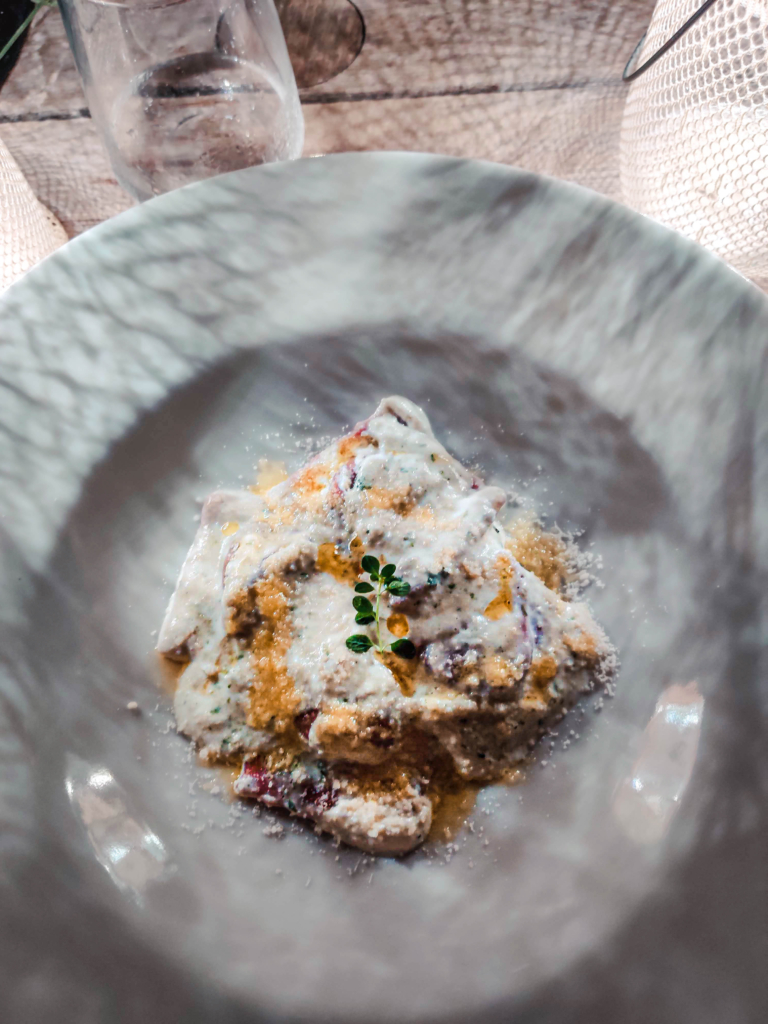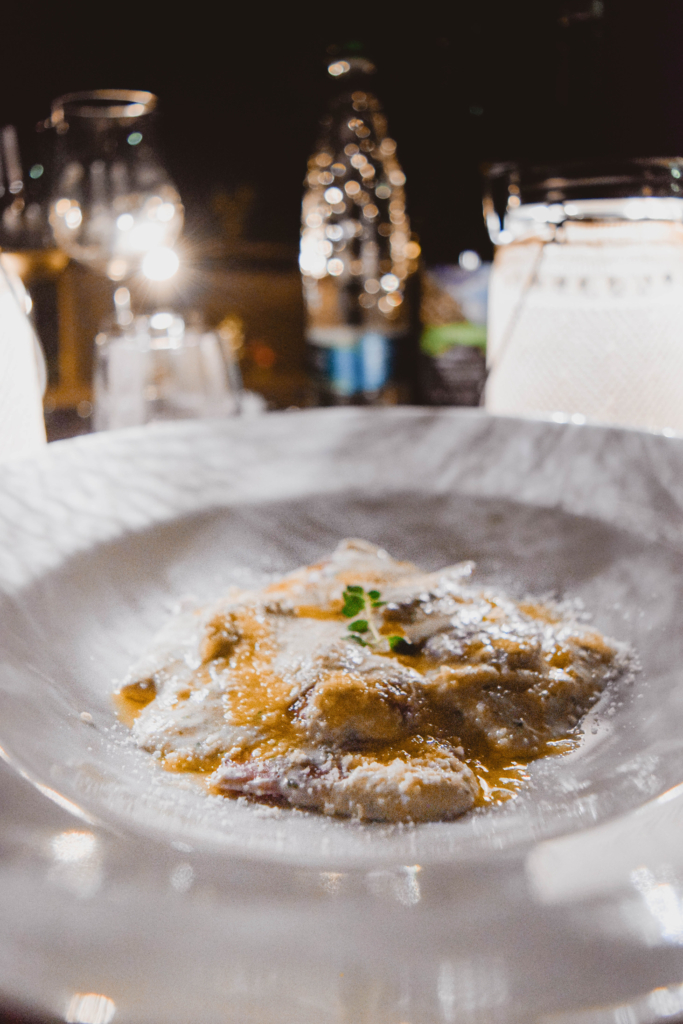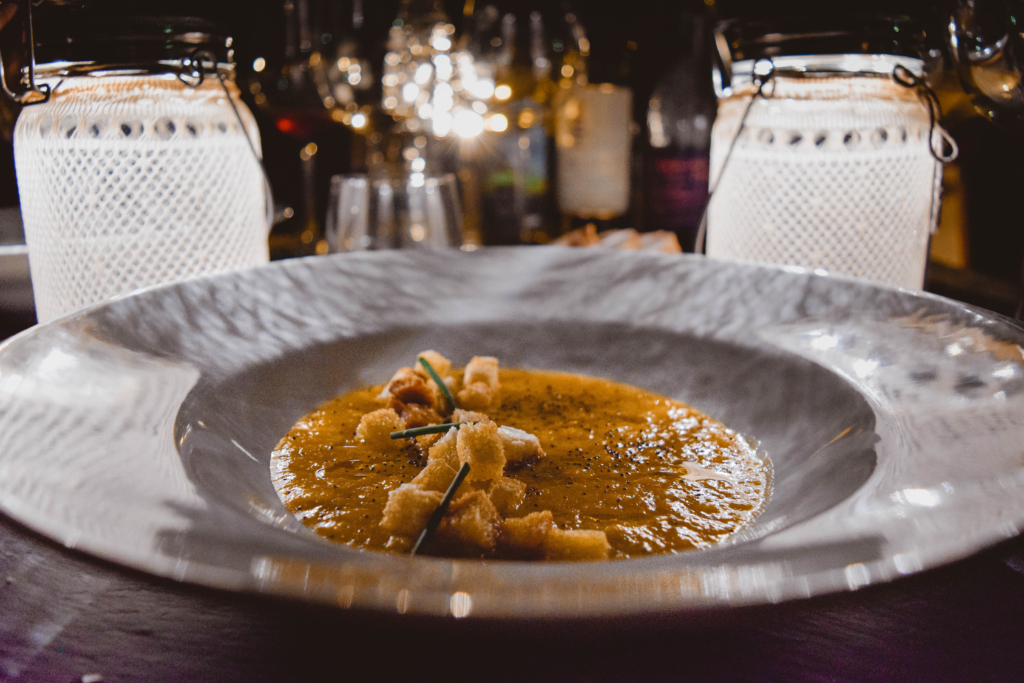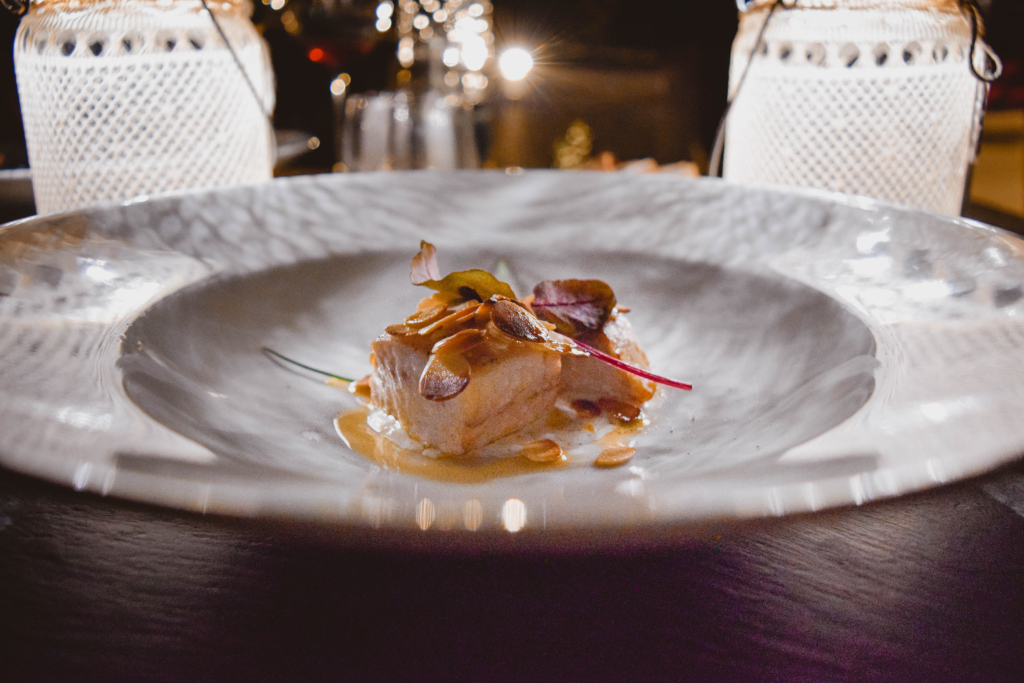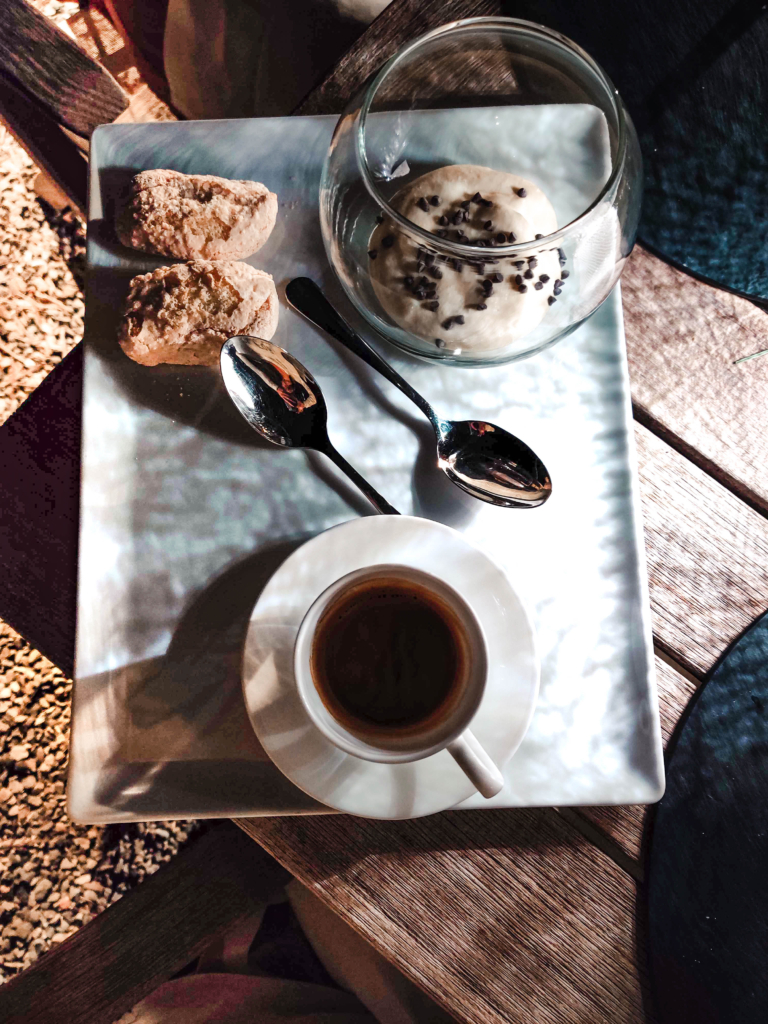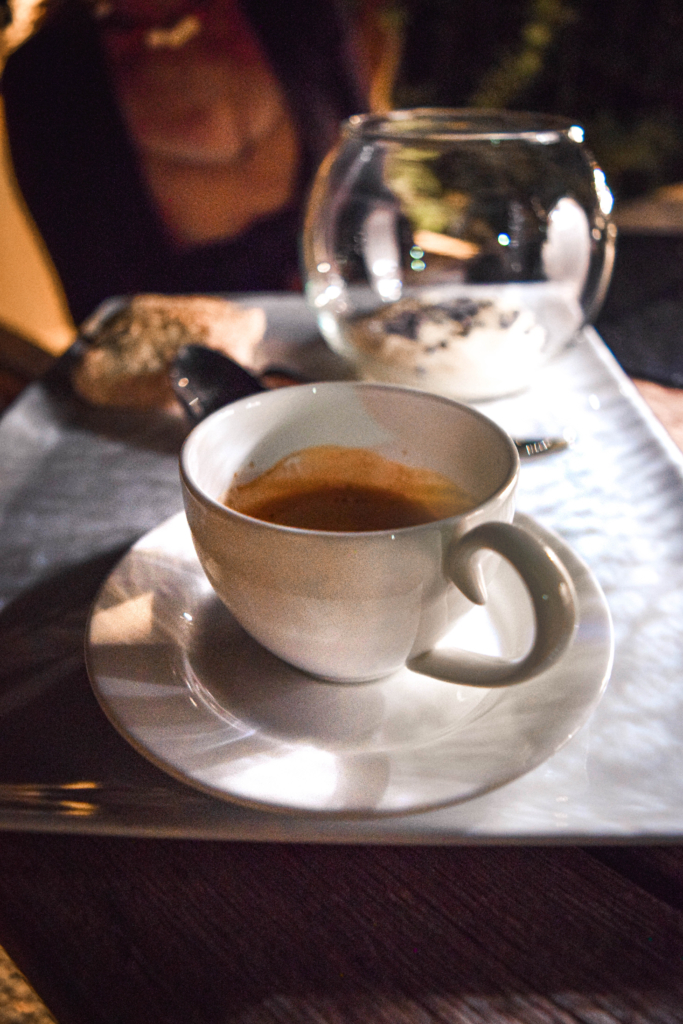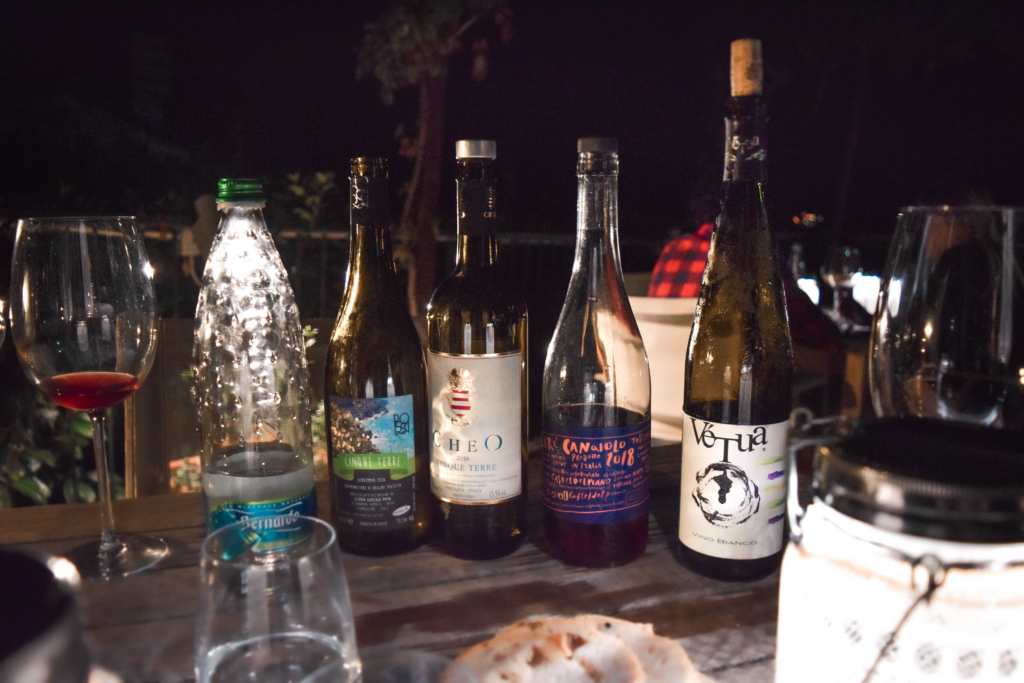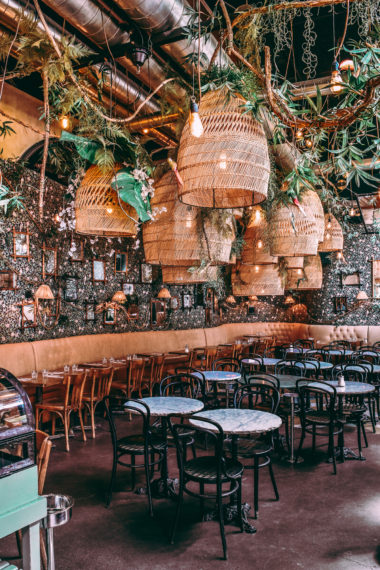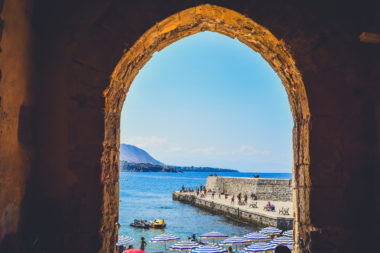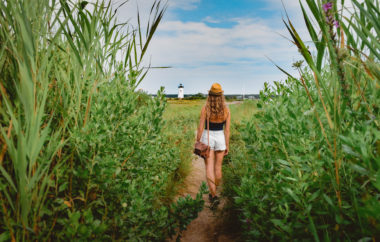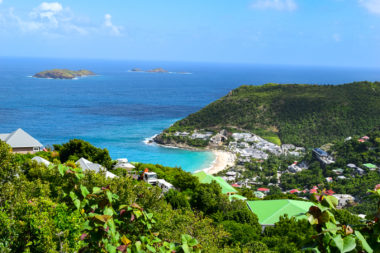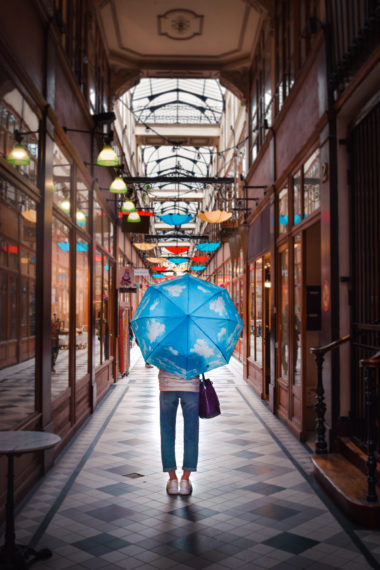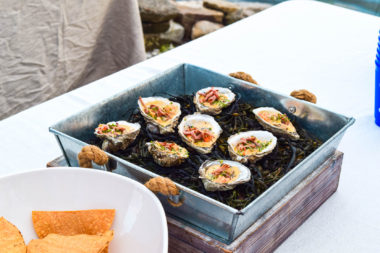Why are le Cinque Terre a UNESCO World Heritage Site? Hint: It’s not because of the 5 seaside towns. Learn why by eating your way through a Michelin recommended dinner at La Sosta.
Embark on an educational and gastronomic journey for the senses via a Michelin recommended meal in the medieval hills of le Cinque Terre at La Sosta di Ottone III. To understand le Cinque Terre you must eat through its history and present day. Imagine a romantic night in le Cinque Terre away from the crowds…you drive your car up to a medieval hamlet called Chiesanuova surrounded by rolling hills that stand atop of the Mediterranean sea. You hop into a monorail, reminiscent of the agricultural monorails you find around le Cinque Terre vineyards, that brings you up to the 16th-century 6-room boutique hotel and restaurant—La Sosta di Ottone III. You take a moment to catch your breath as you reach the top and are led to a romantically lit, vineyard terrace overlooking the landscape.
Wine is the soul of this protected UNESCO land and a crucial part of Le Cinque Terre’s history. So why are le Cinque Terre considered a UNESCO World Heritage Site? It’s not the five seaside towns, but what is protecting the five seaside towns from disappearing—extensive terrace development. 7,000 km (4,350 miles) of handmade, dry stone walled terraces have been built for vineyards and olive groves. That’s right, I said handmade. These terraces surround the five lands, known as the le Cinque Terre. But creating an agricultural environment on these steep slopes and inhospitable terrain is not easy. The walls constantly break down and need to be maintained (of course all by hand). Maintenance of these walls is imperative. Without these walls, the 5 seaside towns and medieval towns dotting the le Cinque Terre coast are at risk of destruction via landslides and mudslides during heavy rains. It’s thanks to these dry stone walls, and to wine, that these towns exist today.
Unfortunately, there has been a decrease in the number of dry stone wall workers and farmers. Because of this, the terraces have begun to deteriorate, leaving the towns below at risk. One of La Sosta’s restaurant missions is to educate its guests on the wine that is maintaining the land and its people—the true heroes of le Cinque Terre.
Now that you know the truth, you understand why tasting Cinque Terre is something that cannot be missed. La Sosta restaurant has gained Michelin recognition for its plates, carefully prepared with local and regional seasonal ingredients, and for its comfortable yet historic property and position. La Sosta di Ottone III boutique hotel and restaurant is all about cultivating relationships with the locals and telling their story through their Michelin recommended tasting Cinque Terre dinners. The dinners and wine pairings are a sensorial experience that take you through le Cinque Terre, why they are a recognized as a UNESCO World Heritage Site, and the local people who have spent centuries working hard to maintain this land with passion. To experience this culinary immersion, if you’re not a guest at the hotel, a reservation is a must. For more on my experience as a guest at the hotel, read on here.
1. Aperitivo: Baccalà Mantecato
Wine Pairing: Cinque Terre 2018 by Possa (Location: Riomaggiore)
Baccalà Mantecato, or cod mousse, is a traditional seaside dish that was created by sailors back in the day with the limited ingredients they had on hand-salted fish, potatoes, oil, and dried fruit. La Sosta’s baccalà mantecato though was not only excellent, but particular from the usual recipe as well. It’s ideal for those who appreciate a well-balanced sweet and salty mix. The potatoes gave a delicate note and a melt-in-the-mouth consistency and the cod mixture had just the right degree of both creaminess and salt. My favorite addition was the slight hint of red berry sauce.
The baccalà mantecato was perfectly paired with our first white wine made by Possa, a farm and winery based in le Cinque Terre’s Riomaggiore run by artisan Samuele Heydi Bonanini. I was told Bonanini was one of the most cheerful, kindhearted, and passionate locals they work with. La Sosta is able to organize private wine tastings and tours with him…will need to be for next time! The wine called Cinque Terre DOC 2018 is made of 80% bosco (the most common and cultivated white grape in Liguria) and 20% albarola (a rare Italian white grape found in the Cinque Terre region and used as a blending component). On the nose, I got hints of floral, while to the taste a crisp yet sweet acidity, almost like an apple crisp mixed with honey. The body was light, but with a heavy finish and definitely stronger than your every day white wine. The wine leaves somewhat of an oily residue on the lips, something unique I had never experienced before. Le Cinque Terre by Possa was one of the most unique wines of the night.
More on the rare albarola grape…
Albarola is mainly produced in the Liguria region where there are about 1,250 acres of this type of grape. It is rarely bottled alone since it has a potential alcohol content of 18%. They are not very popularly used because they are a grape that is planted on steep terrain so needs to be handpicked. This makes the grape rare and expensive. As the grapes are set to dry they become very sweet in flavor
2. Antipasto: Homemade Ravioli
Wine Pairing: Cinque Terre 2018 by Cheo (Location: Vernazza)
This meal accentuated the fact that traditional Ligurian cuisine is very green in nature. We were served homemade ravioli with seasonal fillings, in this case ravioli di prebuggiun. Prebuggiun is a Ligurian recipe made of 12 different wild herbs collected from the Ligurian fields, wineries, and olive trees. The herbs change depending on the season are cannot be purchased in any ordinary market, they need to be foraged in the wild. The taste is obviously indescribable and something that needs to be savored in person. The ravioli where coated in a blend of ricotta cheese, pine nuts, marjoram, and extra virgin olive oil. Every bite is like an aromatic taste of a fresh summer meadow. The sauce is nutty and not too thick, yet creamy as ricotta should be, with a lightly decadent finish.
Our first white wine was more contemporary in nature, but our second white wine one is as traditional as it gets and adheres strictly to the DOC regulations. 50% bosco and 50% albarola and a mix of other wines, this wine packs a smoother punch than the last one. Cheo winery is located right above Vernazza and owned by a couple that decided to invest their time and money in recovering a once degrading terrace. It’s friendlier and easier to drink, a perfect complement for a delicate meal like the homemade ravioli di prebbugiun. Similar in flavors, it’s citrusy with a fresh finish, almost like the wild herbs one finds along the sentieri, or walking paths, mixed with the saltiness of the Mediterranean sea. It leans more towards a lemon flavor and still retains an oily texture, although not as much as the previous wine.
3. Primo: Passato di Verdura di Stagione
Wine Pairing: 2018 Clare Toscana IGT by Castel del Piano (Location: Tuscany)
As we continued tasting Cinque Terre, we stayed true to the roots of Ligurian cucina or cuisine, we stayed along the same path of greens. Our first main dish was a seasonal vegetable soup with poppy seeds, leeks, zucchini, ripe potatoes, and tomatoes topped with croutons. The dish included a very strong flavor of concentrated extra virgin olive oil, something I had never experienced before. This olive oil was so pure and concentrated that it left a tangy almost mild stinging feeling in the back of my throat with each slurp.
Is it good for olive oil to sting in the back of your throat?
Yes! Interestingly enough, stinging in the back of the throat and coughing means you are consuming the purest form of extra virgin olive oil with plenty of natural good anti-inflammatory agents in it. It is highly valued in Italy and regarded as the best olive oil you could find.
For this wine pairing, we move slightly away from le Cinque Terre and slightly further south near the border with Tuscany and move to a red wine. Cinque Terre wines have always been owned by families. In order to make sure they had wine all year round no matter the weather conditions. it was imperative they spread their vineyards out throughout the land—one up high, one near the sea, one in the sun, one in the shade etc. That’s why we turn to the neighboring region of Tuscany. The main ingredient here is Canaiolo, a now forgotten black-skinned Tuscan wine grape that basically created the Chianti wine back in the 19th century. Now a days, just a handful of canaiolo wines are made this being one of them. The wine had bit of spice to it and had a steady feel throughout, no lingering punch at the end and no unexpected taste at the start.
4. Secondo: Fish of the Day
Wine Pairing: Vétua Bianco by Vétua (Location: Monterosso al Mare)
Our main dish was oven-baked swordfish with a drizzle of almond, fresh yogurt, and mint sauce. The fish varies everyday in the kitchen based on the catch of the day. The mint and the fish complement one another perfectly. The precise and sharp taste of mint give a unique characteristic flavor to the delicate fish. The almonds add an elegant taste and crunch to the otherwise delicate swordfish. Exquisite.
Our final wine of the night was back in le Cinque Terre at Monterosso al Mare. This white wine consists of a mix of Piccabùn, Frappelà, Brujapagià, Bosco, Vermentino, and Albarola grapes. Again the hint of herbs, spices, and land add a fresh taste and a perfect accompaniment for the fish. What I really loved about this wine was the through put behind their logo. A circle, which represents the circle of life, the earth, and the passing of the seasons. The grape, which symbolizes the end of harvest season. And the hand with lines in it which symbolizes the paths of the Cinque Terre and how man through his hands is supporting this land.
5. Dolce: Tiramisù della Sosta
The dessert was something I had never had before or seen really. It was a modern take on the traditional tiramisu, it was homemade deconstructed tiramisu. Deconstructed tiramisù separates the biscuits, the panna, and the coffee. By deconstructing every component, the tiramisù takes on a different texture and flavor with every bite. What I loved about it was that you could decide how to eat it yourself (they don’t give you explanations as to how, it’s up to your imagination and creativity to decipher that) and you can decide how much of each component to eat. You are even given a choice between decaf coffee and regular coffee, a plus which isn’t available in other tiramisùs.
Tasting Cinque Terre lasted about 2 and a half hours. As with everything in Liguria, it was eaten and served con calma (no rush) so you could take in the moment and the flavors of the wine and cuisine. By the end of our meal my mom and I were full, but pleasantly not too full, and tired. The wine had relaxed us and tuckered us out and the thunder we could see and hear in the distance was now nearing us. We retreated back up to our room and within minutes the thunderstorms began to hit. We had finished dinner just in time.
That night I couldn’t help but think…yes this region is stunning, but the true gift and charm of this area is its people and the work they put behind their land and their products. As you sit with a glass (or 4) of wine on La Sosta’s terrace overlooking the Mediterranean sea and are taken through a history of the land gastronomically, you can’t help but think that La Sosta is the only place that can bring to life the true beauty, treasures, people, pace of life, and intimacy of this land that can only be experienced by tasting Cinque Terre.
Disclosure: This is a sponsored post for La Sosta di Ottone III. All opinions remain my own and I was in no way influenced by the company.
Follow SVADORE on:
tasting cinque terre tasting cinque terre
